A fairly effective way to level the ceiling and walls is to use drywall. With its help, you can create multi-level relief structures with bizarre shapes. However, leveling the surface is only the first stage of finishing work. The base is yet to be painted.
This method is one of the easiest solutions for refining drywall. At first glance, it may seem that coloring is a fairly simple task. However, the surface of the sheets still needs to be rid of minor flaws, as well as work on preparing the canvases. If you want to use paint that will mix with the color, then you will also need to test the color.

Do I need preparation
Quite often plasterboard walls and ceilings are painted with different colors, in which case you will need to outline the contours. On theeach individual section of the ceiling or wall will have to be painted in several layers. As practice shows, the preparation stage is the most difficult. Even if there are no special requirements for the quality of work, you will have to try, because the appearance of the surface ultimately depends on how well the base is prepared. After applying the first coat of paint, you will have to wait a certain time. It is usually indicated in the instructions and can last from 4 hours to a day.
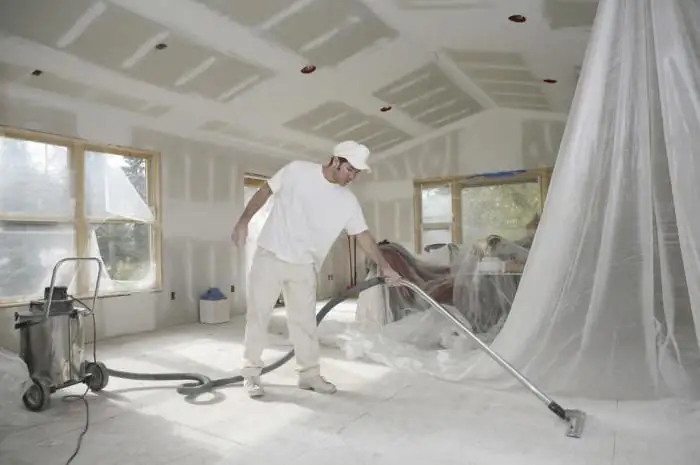
Surface preparation
If you will be painting, drywall must first be covered with putty. This stage is mandatory, because during the installation of the canvases, seams are formed that must be sealed, otherwise they will be visible. There may be potholes and dents on the surface, which quite often remain from fasteners. Before finishing drywall, its surface must be wiped with a damp cloth to remove construction debris and dust.
The base should dry well, because applying the mixture to a wet surface is unacceptable. The second step will be primer treatment, for this you can use a sprayer or brush. It is important to exclude even the slightest drafts. Drywall sheets are then left until dry.
Quite often used today painting, drywall can also be ennobled in this way. Putty is applied to its surface with a rubber spatula. The seams should be reinforced with sickle. It is also important to close up the recesses that remain from the fasteners. Putty should be applied to joints that should not be visible at the time of painting. Once everything is dry, you can grout using a grid or sandpaper.
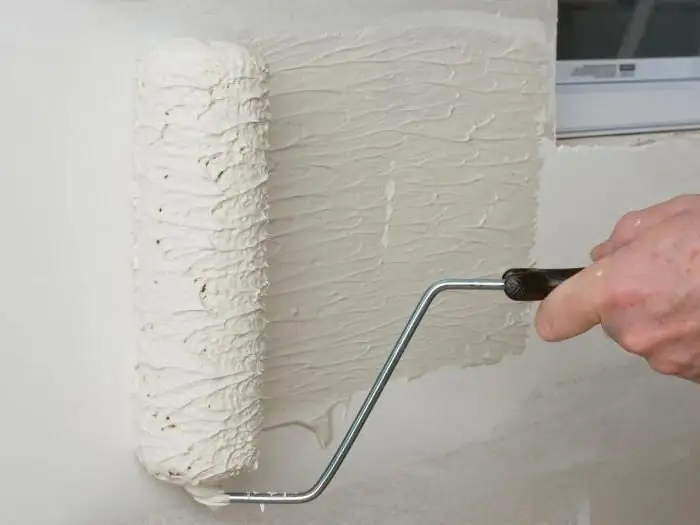
Why putty GKL
Many novice home craftsmen are wondering how to putty drywall for painting. This is discussed in the article, but it is also important to understand why this stage of preparation is needed. Even if the canvases are fairly even, then putty should not be abandoned. This will reduce paint consumption. In addition, you can hide the green tint of the surface.
Even if you apply paint in several layers, you will not be able to achieve a good result. The only exception is the case when the color of the paint matches the shade of the material itself. How to putty drywall for painting, you will learn if you familiarize yourself with the material. The need for this stage should not be neglected, because otherwise the joints between the canvases will have to be filled with expensive paint, which in this case has to be applied in a number of layers equal to four. Choosing a quality paint, you will pay more than when buying putty, which prepares the drywall surface.

Paint selection
Painting is quite popular today, drywall, after you have installed it on the ceiling, walls or floor, must also be finished. For this, alkyd enamel may be suitable, which, after drying, formsglossy surface. In this case, the existing errors, defects and shortcomings may remain visible. Therefore, when performing work, it is recommended for beginners to choose a water-based emulsion. On sale it is presented in different versions.
Water emulsion makes drywall matte, you can add color to its composition to achieve the desired shade. However, it is better to refuse this mixture if you plan to paint walls whose operating conditions are characterized by high humidity.
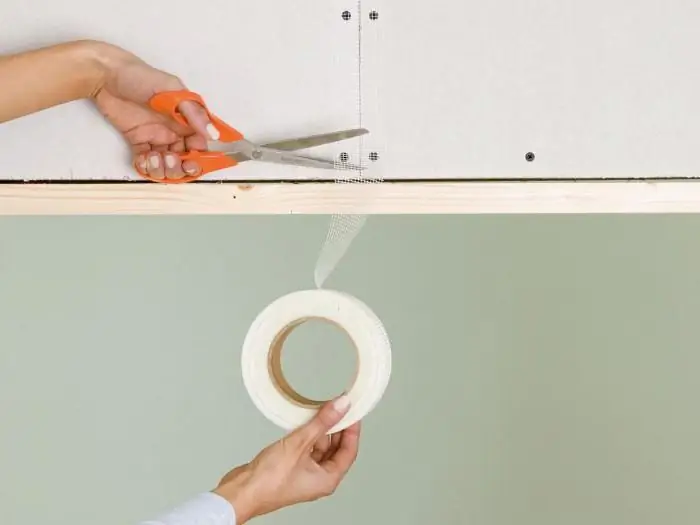
Additional recommendations
If you will be painting, drywall after completion of such work should look attractive. Therefore, the purpose of the room should be considered. The above-described water emulsion is suitable for almost any living space. For the kitchen and bathroom, it is better to prefer water-based mixtures that are designed for conditions with high humidity.
Water-based acrylic paint is also quite popular today. It can be used to achieve a matte or glossy surface. As a result, it will be possible to form a layer that is resistant to moisture. This option will be ideal for bathrooms. Depending on the method of application, the paint will have a certain consumption. If you want to achieve high productivity, then it is best to use a roller. Its foam rubber variety should be abandoned. Additionally, you should prepare a brush, with its help you can paint hard-to-reach places.
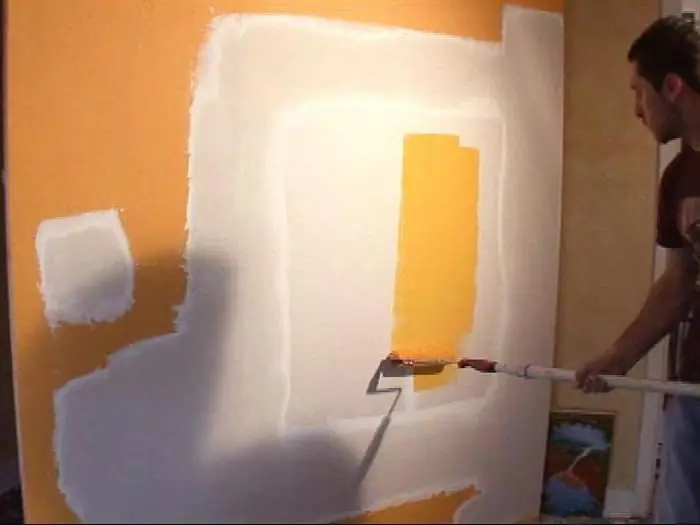
Markup andpasting contours for coloring with different colors
Painting a drywall ceiling may involve applying a composition with different shades to one surface. To do this, individual sections are separated with a pencil or chalk. Masking tape should be used to define the outline. Once you can paint one area and it is completely dry, you can pull the tape on the edge and tear it off, proceeding to paint the rest of the ceiling or walls.
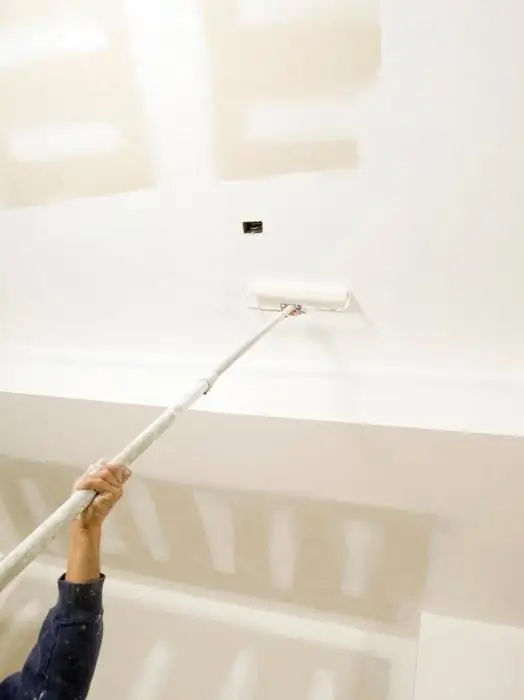
Dyeing process
If you have prepared a plasterboard ceiling for painting, it is important to stock up on some tools. Among others, the brush should be highlighted. With its help, the perimeter of the area is painted, on which the composition is to be applied before the rest. To do this, use a flat brush with a width ranging from 60 to 80 mm.
Paint can be poured into the paint bath, which will allow you to conveniently run in the roller. With it, you can paint the rest of the area. The roller is dipped into the paint, and then with the help of a stand, the composition will need to be distributed over its surface. When applying each layer, it is necessary to roll the roller in one direction. One strip should be carried out several times so that the paint is evenly distributed.
The large surface should be painted with stripes that will be perpendicular to the direction of the roller. Their width can vary from 60 to 80 cm. As soon as the paint has been rolled out of the roller, the tool should be walked over the newly painted area. Notyou should touch the roller to the place where the paint has already begun to set. This will happen 5 minutes after applying the mixture.
Each next layer should be perpendicular to the previous one. It should be started only after the mixture has completely dried. Painting walls made of plasterboard can be accompanied by certain difficulties. For example, you may have noticed that some areas were overpainted. Do not remove the mixture at a time when the paint has already dried up a little. It will be possible to cope with the task only after its complete grasping. Excess can be removed with sandpaper, and then re-paint the area. The process of applying glossy paint is more complicated. The appearance of noticeable stripes and stains can only be avoided if you have certain skills in carrying out such work.
Recommendations for using water emulsion
The technology for applying a water-based emulsion is somewhat different from the one described above. Each subsequent layer can be applied over the composition, which is still wet. There should be two or three layers in total. If you have to work with the ceiling, then you can apply paint in two layers, the first of which should be located across the room, the second - along. When it is planned to apply the third layer, it should be directed along the room, while the second - across. Dealing with the sequence is very simple: the last coat should be applied along the room.
Painting plasterboard walls with enamel
If painting will be carried outdrywall with your own hands, then you can use enamel. However, the methodology is somewhat more complex. The process will stretch, because you have to wait until each layer of paint dries, and such a composition will cost more compared to water-based mixtures.
The material is applied in zigzag or chaotic lines. Until the moment it is dry, the composition is shaded using a brush. The second layer is applied along the room in strips that overlap each other. Usually two coats are enough to achieve a good result.
Useful Coloring Tips
You need to start painting from the corners, no matter what they are - wall or ceiling. To do this, you can purchase a corner roller. Those places where switches and sockets will be installed should be painted with a brush, stepping back 3 cm. The movements of the tool should be directed from the ceiling to the floor.
Before starting the process, the paint should be well mixed. If we are talking about a water-based composition, then it is diluted with water, while for enamels in this case solvents are used. Drywall is primed before painting, for this it is recommended to use an acrylic composition. The joints between the canvases are painted first. Once these areas are dry, you can start painting the entire surface.
Conclusion
Quite often plasterboard is used today to level walls. Painting, puttying this material is necessary if you want to make the ceiling, walls and floor aesthetically attractive. However, it is important not onlychoose the right paint, but also use the preparation technique. For example, putty will need to be applied to the surface, which allows you to get rid of the errors that arise during inaccurate loading.
As a result, the sheets may become dented and scratched, and their corners may be knocked down. All these errors can be hidden with ordinary putty. Finishing drywall for painting will still be needed, even if the transportation was carried out very carefully. After all, sheets of material are installed using self-tapping screws - the places from the hats will need to be filled.






